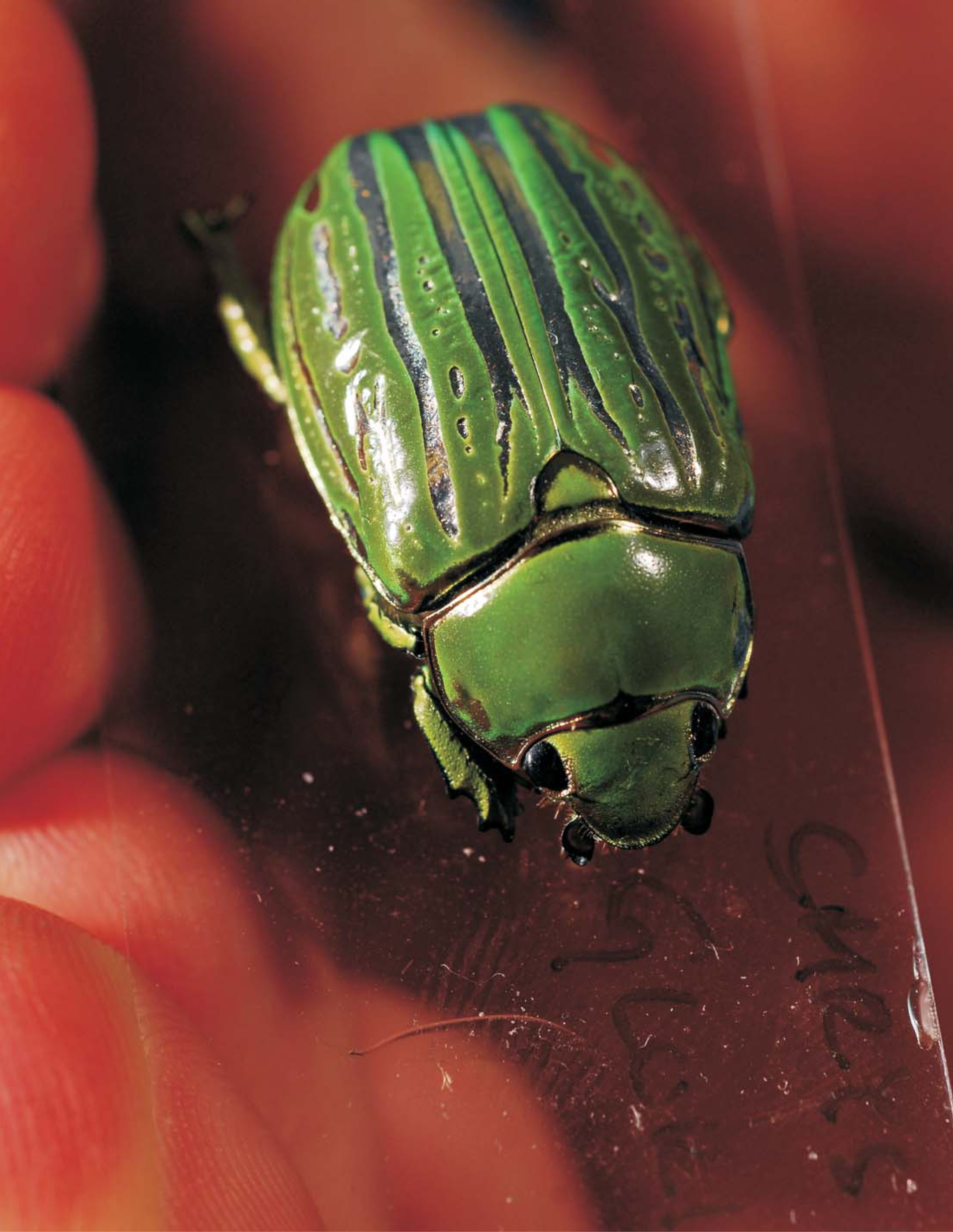The chirality of beetles
DOI: 10.1063/1.3226777
The brilliant metallic iridescence of so-called jewel beetles, such as the Chrysina gloriosa seen here, arises not from chemical pigments but from the physical structure of the beetles’ exoskeleton. The beetles share that morphological trait with several other creatures, including butterflies, birds, and fish (see Physics Today, October 2006, page 82
Viewed under a microscope, the exoskeleton contains cells—mostly hexagons, plus some pentagons and heptagons—that are about 10 µm across and appear green with a yellow core. Confocal microscopy revealed more detailed information: Each cell has a shallow, central, conical peak surrounded by nested arcs. That topology closely resembles the free surface of cholesteric liquid crystals, also known as chiral nematic liquid crystals. In such liquid crystals, neighboring molecules align at a slight angle, producing a helical twist of the molecular orientation. As their name implies, chiral nematic liquid crystals selectively reflect circularly polarized light. Helicity in beetle exoskeletons was already known, but Srinivasarao and colleagues note that the new, stronger connection to cholesteric liquid crystals should help researchers better understand the formation of the exoskeletons and may motivate new chiro-optical devices. (V. Sharma et al., Science 325 , 449, 2009 http://dx.doi.org/10.1126/science.1172051
To submit candidate images for Back Scatter, visit http://www.physicstoday.org/backscatter.html

Photo by Gary Meek, Georgia Tech.

